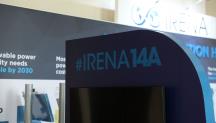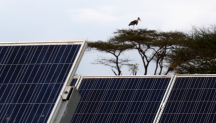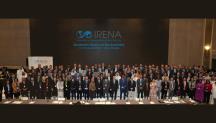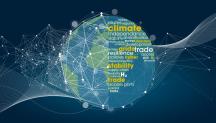

Second Collaborative Framework on Critical Materials Meeting Calls for Stronger Collaboration and Knowledge Exchange
Newsletter
The energy transition is set to drive increased demand for various materials. Currently, most of these materials are primarily used for purposes unrelated to the energy transition. However, as the transition progresses, we can anticipate a growing demand for some of these resources. The International Renewable energy Agency’s (IRENA) 1.5°C scenario underscores the substantial scale of the infrastructure and material requirements necessary for achieving climate stabilisation. This ambitious endeavour includes the need for a significant 33,000 GW of renewable energy and the electrification of 90% of the road transportation stock by 2050. Already, there are supply bottlenecks for some materials, and there are concerns that these could rise if risks are not addressed. noticeable disparities in the supply and demand.
Bringing insight from IRENA’s latest report on Geopolitics of the Energy Transition IRENA Director for Planning and Program Support Elizabeth Press discussed the challenges related to resource security and geopolitical dynamics stemming from the concentrated production and processing of critical materials. This included an exploration of six major geopolitical risks affecting material supply, such as external shocks, resource nationalism, as well as export restrictions, mineral cartels, political instability and social unrest, and market manipulation. She highlighted the importance of correct data and encompassing information along the value chain for decision-makers to design appropriate mitigation strategies.
A second driving theme of the discussion around critical materials was presented by Mr. Luis Janeiro, Team lead – End use sectors at IRENA, based on IRENA’s preliminary analysis on EV batteries. Mr. Janeiro highlighted that material availability will not be a long-term issue, but short to medium-term supply challenges may arise. Addressing these challenges requires scaling up mining and processing capacity fast. However, technological progress and innovation have the potential to reduce demand significantly. Current lithium-ion battery technology, required for EVs, relies on various critical materials. However, innovations in EV batteries are advancing rapidly, reducing demand for some critical materials (compared to past projections) by introducing substitutes, enhancing efficiency, optimising designs, and incorporating new materials.
For instance, concerns about the scarcity, cost, and ESG impacts of nickel and cobalt supply chains have resulted in a significant reduction in their utilisation in conventional lithium-ion batteries, driven by innovation. As a result, lithium-iron-phosphate (LFP) batteries, which do not require cobalt or nickel, began replacing nickel-manganese-cobalt (NMC) batteries in entry-level EVs. While NMC remains the preferred option for high-performance vehicles, this shift is evident in the market share of LFP batteries, which grew significantly from single digits in 2015 to an estimated 40% in 2022.
Beyond the adoption of LFP batteries, other promising developments include the initial stages of sodium-ion batteries, eliminating the need for lithium, and emerging anode designs progressively reducing graphite reliance. Monitoring these fast-evolving technologies and market developments is essential.
IRENA is following these developments closely and providing its members and relevant stakeholders with a platform to discuss various matters related to critical materials. The Collaborative Framework on Critical Materials for the Energy Transition features three workstreams on a) data collection to understand scarcity and potential supply shortages, b) strategies to de-risk supply and c) strategies to raise acceptance for new mining projects.
70 Representatives from 38 countries attended the Second Plenary Meeting of the Collaborative Framework on Critical Materials for the Energy Transition.
For her part, IRENA Deputy Director-General Gauri Singh highlighted strategies that foster technological innovation and material substitution to contribute to the reduction of material demand, including the implementation of circular economy concepts that encourage reusing and recycling critical materials and a rapid but sustainable and green expansion of mining and processing capacity to ensure supplies for years to come.
Members countries of the Framework highlighted the following challenges and key areas of cooperation to further explore within the Collaborative Framework:
- Enhanced bi- and multilateral cooperation to encourage complementarities between different members and foster knowledge exchange;
- Need for reliable data to understand geopolitical implications and environmental impact of extracting and processing;
- The importance of high standards in mineral extraction for public acceptance and support, as well as the exchange of good practices on sustainability;
- Exploration of circular technologies and learning from other sectors,such as the chemical and petrochemical industry;
- Importance of establishing clear and supportive regulations that incentivize the adoption of sustainable and innovative technologies.
Members furthermore highlighted the importance of the Collaborative Framework to support members in generating awareness among consumers, businesses, and policymakers about the significance of responsible mining practices and transparent communication between mining companies and local communities.
As of the next Collaborative Framework Meeting planned for the first half of 2024, the outgoing co-facilitators, the United Kingdom and Peru, are handing over to Mexico and Italy.
Further information on the Collaborative Framework is available at CFMaterials@irena.org.




